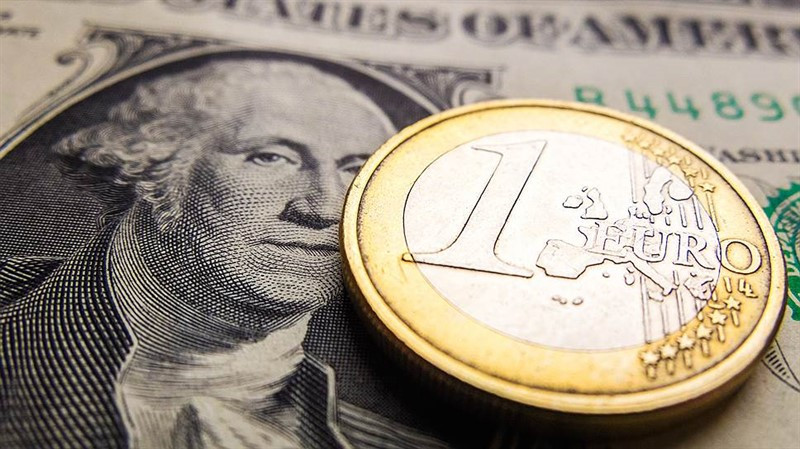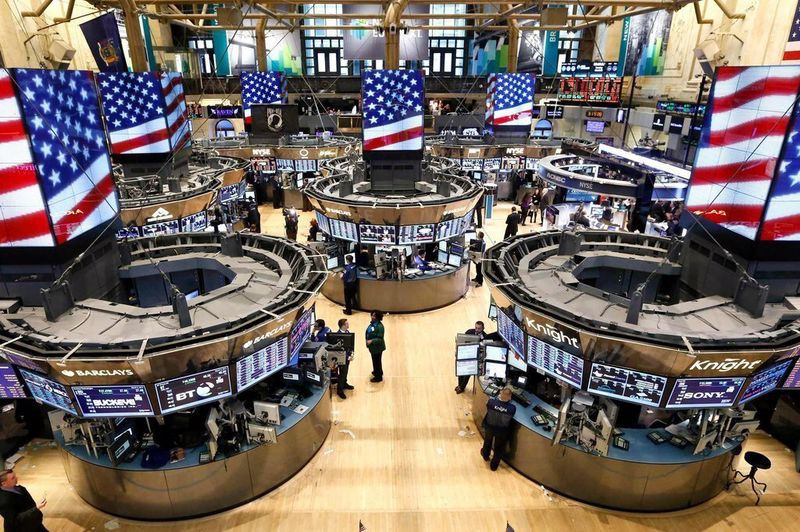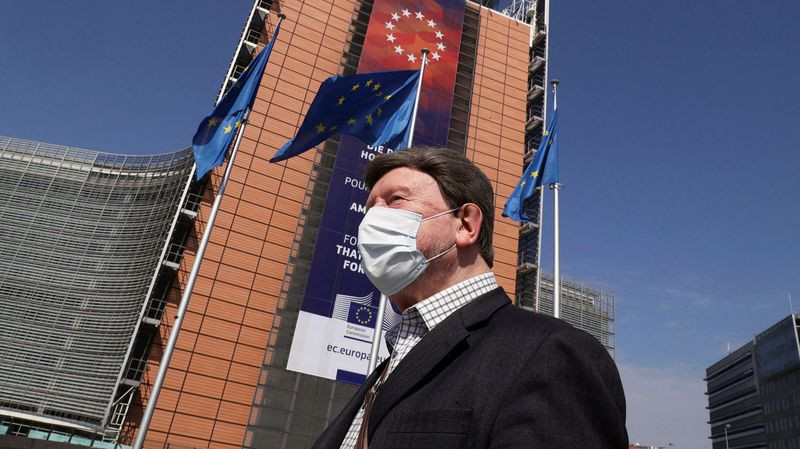
Experts compare the sentiment that now prevails in the markets with those experienced by traders at the beginning of the coronavirus pandemic. Everywhere you look, vulnerability is everywhere.
Global pessimism forces investors to flee to protective assets, which pushes up the USD exchange rate and reduces the yield of US government bonds.
The day before, the indicator for 10-year treasuries fell by 12.8 basis points and reached 1.708%. Before the start of Russia's military operation in Ukraine, the yield of "ten-year-olds" was about 2%.
The VIX index, also known as the Wall Street fear indicator, rose to its highest levels since February 24.
On Tuesday, the key US indices again failed to stay in positive territory. Following the results of yesterday's session, the S&P 500 sank by 1.5%.
Although, according to some reports, Russia and Ukraine account for only 1% of the revenue of S&P 500 companies, investors are concerned about its consequences for the global economy.
The armed conflict between Moscow and Kiev has generated fear of an energy crisis and stagflation.
Oil quotes have already exceeded the level of $100 per barrel, reaching the highest since 2014. Natural gas prices in Europe have risen by more than 24%.
The problems of the commodity market threaten to worsen inflation, and central banks, tied hand and foot, seem to be no longer in the mood to save anyone and intend to raise interest rates.
Investors are stewing in a cauldron of fear, not knowing how to put geopolitical news in prices, and fear that without a stimulus program, against the background of an increase in the value of bonds, the risk of default on loans and losses due to sanctions imposed, global GDP may stop growing and move to stagnation.
These concerns contribute to the fact that trillions of dollars are flowing out of the US stock market.

"Due to the amount of incentives, liquidity and inflated valuations, the market has stopped adequately assessing reality," Richard Bernstein Advisors analysts noted. However, the tightening of monetary policy and the war promise to become a deafening chord of what is considered the most epic period of speculation since the dot-com bubble, experts warn.
According to them, first of all, the favorites of the pandemic, that is, the shares of technology companies, will have problems.
"Inflated estimates have created two unrealistic expectations. First, they hinted that the stock will continue to grow steadily in the foreseeable future. And secondly, they made it clear that innovative companies can be winners. We think there's still a bubble in some parts of the stock market, and there's still a lot of air in that bubble," said strategists at Richard Bernstein Advisors.
Meanwhile, a number of analysts, including from JPMorgan, said that the current situation should not have much impact on the global economy, and soon stocks will go up again. They believe that investors risk missing out on profits due to the recovery in the market if they decide to sell shares now.
"Historically, the vast majority of military conflicts, especially local ones, did not undermine investor confidence for too long and eventually gave an opportunity to buy," JPMorgan analysts said.
According to experts, Russia's invasion of Ukraine in the short term can make a big contribution to the pullback of stock indices, although in itself it is unlikely to become a long-term downside risk for US stocks.
Rather, the market will be under more pressure from the first increase in the Federal Reserve's key rate expected in March, especially since companies have warned that their profits are likely to decline this quarter, analysts believe.
Raising the federal funds rate by half a point at once, which some FOMC officials talked about last week, is now considered an unlikely scenario, but the upcoming releases on employment (March 4) and inflation (March 10) may force the Fed to take more aggressive steps.
It is worth noting that the latest statistical data from the United States fully justify such a decision. The ISM report released on Tuesday showed that in February, the purchasing managers' index in the US manufacturing sector rose to 58.6 points from 57.6 points recorded in January.

Money markets are currently pricing in fewer than six Fed rate hikes of 25 basis points this year, compared with a projected rise of a total of 175 basis points in mid-February.
The most influential central bank in the world is now considering whether to increase the cost of borrowing by the standard 25 basis points or by 50 basis points. Russia's invasion of Ukraine has created new doubts.
The FOMC will meet in about two weeks to hold its first rate hike in the pandemic era.
Fed Chairman Jerome Powell's speech on Capitol Hill on Wednesday and Thursday is his last opportunity to shape market expectations ahead of this meeting, as the central bank will soon enter the so-called "period of silence."
Will the Russian-Ukrainian conflict change the Fed's plans to tighten monetary policy?
At the moment, there is no evidence of direct damage to the US economy, which is operating at full capacity.
Thus, there is a possibility that Powell simply recognizes the risks associated with the conflict and adds them to a long list of uncertainties, and the Fed will continue to implement its plans.
This would increase the chances of more aggressive actions by the US central bank in the future and would support the dollar.
The greenback beat its main competitors on Tuesday. The day before, the USD index rose 0.7% before settling around 97.60 on Wednesday.
The rally of the US currency continues for the third consecutive day, and the euro cannot yet find the "bottom".
And this is not surprising, because the first war in the XXI century in the eurozone directly affects Europe and indirectly the whole world.

Unprecedented Western sanctions against Moscow put the eurozone economy in a very vulnerable position, given its close trade and partnership ties with Russia and its continued high dependence on energy exports.
Almost 40% of the gas and more than 25% of the oil imported to the European Union comes from Russia. The loss of this supply, combined with rising prices, will hit Europe particularly hard.
Experts point out that retaliatory measures to freeze Russia's international reserves are hurting the EU economy: this includes a ban on the withdrawal of capital by non-residents and a ban on the sale of shares of Russian companies, and cuts or stops of energy supplies are not excluded. In this case, mass defaults will begin all over Europe, and national governments will have to deal with the debts of companies.
The continuation of the conflict between Russia and Ukraine should support the dollar's growth and continue to put pressure on the euro, since the economic consequences of the crisis will cost the eurozone much more than the United States, according to ING.
"Indeed, the pressure mounting on European leaders is forcing them to grit their teeth and start reducing imports of Russian oil and gas, despite the economic costs," the bank's strategists noted.
"Given that the growth of the eurozone will potentially suffer by 0.7-1.0% this year due to the events in Ukraine, it is not surprising that the EUR/USD pair is crossing new lows. If we don't hear any encouraging news about the ceasefire in Ukraine, expect EUR/USD to drop to 1.1000 and possibly lower," they added.
Analysts admit that if the conflict cannot be resolved in the very near future, inflation in the EU countries will reach new highs, which will hit consumer activity in the region.
Inflation in the eurozone, according to a preliminary estimate, accelerated to 5.8% from 5.1% a month earlier, according to a report published today by Eurostat. The indicator became a record in the entire history of observations.

"Russia's military operation in Ukraine will have an impact on the eurozone economy, as well as on inflation," ECB Vice President Luis de Guindos said on Wednesday.
Military actions on the threshold of the European Union force the European Central Bank to be cautious in its approach to tightening monetary policy.
"The ECB seems to be keeping the door open for continued stimulus. This is a far cry from the central bank's statements about the sequence of curtailing easing measures, which sounded just a month ago when the market was discussing the timing of the end of the APP bond purchase scheme and the first ECB rate hike," ING reported.
"Structurally, Europe has the most to lose on the macro front, and the ECB is probably the most open to dovish reversals at this stage. Therefore, we do not rule out a drawdown of the EUR/USD pair in the direction of 1.1000 and testing this level," OCBC Bank economists said.
Amid increased uncertainty about the economic prospects of the eurozone, investors are lowering their expectations for the ECB rate.
Money markets are currently pricing in an ECB rate hike of less than 15 basis points by December, compared with 35 basis points expected just last week.
This creates the potential for greater divergence in the rates of the Fed and the ECB, which plays into the dollar's hands and negatively affects the euro.
The EUR/USD pair briefly fell below the 1.1100 mark on Wednesday, but then was able to recover.
Apparently, the pair found intermediate support at 1.1080. If bulls fail to defend this level, the bears will target 1.1050 and 1.1000.
On the other hand, the initial resistance is at 1.1130, followed by 1.1180 and 1.1220.





















